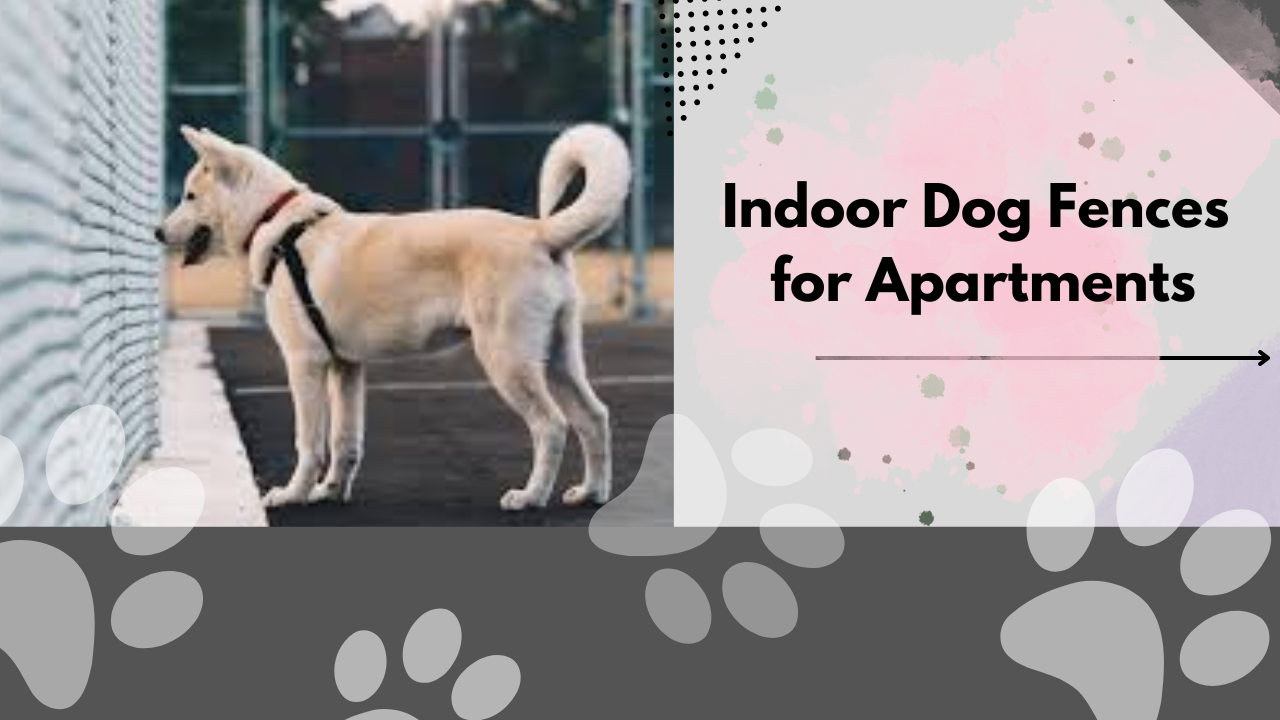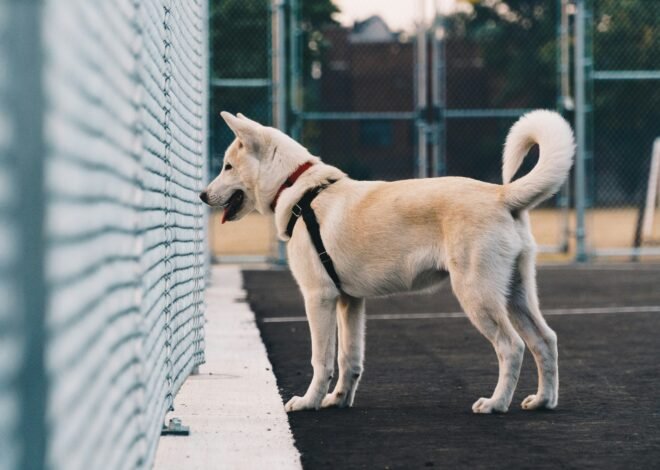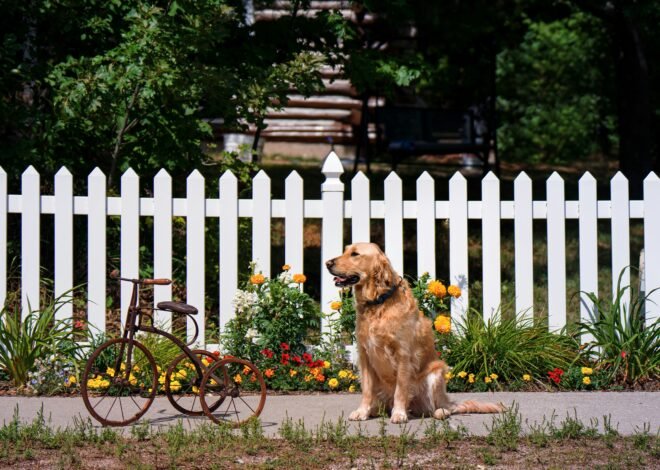
Indoor Dog Fences for Apartments: Choosing the Right One
Living in an apartment with a dog can present unique challenges, particularly when it comes to providing your pet with a safe and secure environment. Indoor dog fences are an excellent solution for managing your dog’s movement within your living space, protecting both your pet and your belongings. This guide will help you understand the benefits of indoor dog fences, the different types available, and how to choose the right one for your apartment.
Benefits of Indoor Dog Fences
- Safety and Security
Indoor dog fences create safe spaces for your dog, preventing access to areas where they might encounter hazards, such as kitchens, bathrooms, or areas with delicate items. By restricting your dog’s movement, you can ensure they stay out of harm’s way.
- Protecting Your Belongings
Dogs, especially puppies, can be curious and sometimes destructive. An indoor dog fence can keep your pet away from furniture, electronics, and other valuable items, reducing the risk of damage.
- Training Aid
Indoor fences can be an effective tool for training your dog. They can help establish boundaries and teach your dog which areas are offlimits. This is particularly useful for potty training or teaching your dog to stay out of certain rooms.
- Peace of Mind
Knowing that your dog is confined to a safe area can provide peace of mind, especially when you’re not at home. This can reduce anxiety for both you and your pet, making apartment living more enjoyable for everyone.
Types of Indoor Dog Fences
There are several types of indoor dog fences available, each with its own advantages and suitability for different situations.
- Freestanding Dog Gates
Freestanding dog gates are portable and easy to set up. They do not require any installation, making them ideal for renters who cannot make permanent modifications to their apartments. These gates can be moved around as needed, offering flexibility in creating temporary barriers.
- Pressure Mounted Dog Gates
Pressure mounted gates use tension to stay in place between walls or doorways. They are easy to install and remove without damaging walls or door frames, making them a renterfriendly option. These gates are generally sturdy and secure, providing a reliable barrier for your dog.
- HardwareMounted Dog Gates
Hardware mounted gates are the most secure option, as they are screwed into the walls or door frames. While they provide a permanent solution and are very sturdy, they may not be suitable for all apartments due to the need for installation. These gates are best for areas where a long term barrier is required.
- Playpens and Exercise Pens
Playpens and exercise pens offer a larger enclosed area for your dog to move around. They are great for puppies or small dogs and can be used indoors or outdoors. These pens are typically easy to assemble and disassemble, making them a versatile option for creating safe play areas within your apartment.
- Retractable Dog Gates
Retractable gates are a space saving option that can be rolled up when not in use. They are ideal for small apartments where space is limited. These gates can be mounted to walls or door frames and are usually made of mesh or fabric, providing a less obtrusive barrier.
Choosing the Right Indoor Dog Fence
When selecting an indoor dog fence for your apartment, consider the following factors to ensure you choose the best option for your needs.
- Dog’s Size and Breed
The size and breed of your dog will significantly influence your choice of fence. Larger, more energetic dogs may require stronger, taller barriers, such as hardware mounted gates or heavy duty playpens. Smaller dogs or puppies might be adequately contained with freestanding or pressure mounted gates.
- Location and Use
Consider where you will use the fence and what purpose it will serve. For example, if you need to block off a specific room or doorway, a pressure mounted or hardware mounted gate may be ideal. If you want to create a play area in your living room, a playpen or exercise pen might be a better choice.
- Ease of Installation
As a renter, you may prefer a fence that does not require permanent installation. Freestanding and pressure mounted gates are easy to set up and remove, making them renter friendly options. Retractable gates can also be a good choice if you need a semi permanent solution that can be easily rolled away when not in use.
- Durability and Stability
Ensure the fence you choose is durable and stable enough to withstand your dog’s activity level. Look for high quality materials and sturdy construction. Freestanding gates should have a wide base or support feet to prevent tipping, while pressure mounted and hardware mounted gates should have strong tension or secure mounting hardware.
- Aesthetic Appeal
Since the fence will be a part of your living space, consider its appearance. Many dog gates come in various finishes and designs to complement your home decor. Choose a fence that blends seamlessly with your apartment’s interior to maintain a cohesive look.
- Budget
Indoor dog fences come in a range of prices. Determine your budget beforehand and look for a fence that offers the best value for your money. While it’s important to consider cost, don’t compromise on quality and safety.
Tips for Using Indoor Dog Fences
- Gradual Introduction
Introduce the fence gradually to your dog. Allow them to explore the new barrier and become comfortable with it. Use positive reinforcement, such as treats and praise, to create a positive association with the fence.
- Consistent Use
Consistency is key when using an indoor dog fence. Use the fence regularly to establish boundaries and reinforce training. Over time, your dog will learn which areas are off limits and respect the barriers you have set.
- Supervision
While indoor dog fences are effective, they should not replace supervision. Keep an eye on your dog to ensure they are safe and not attempting to bypass the barrier. Supervision is especially important during the initial stages of using the fence.
- Maintenance
Regularly check the fence for any signs of wear or damage. Ensure that it remains secure and stable to prevent accidents. Clean the fence as needed to maintain a hygienic environment for your dog.
- Adjust as Needed
Be prepared to adjust the fence as your dog grows or as your needs change. As puppies grow, they may require taller or stronger barriers. Similarly, if you move to a different apartment or rearrange your living space, you may need to reconfigure the fence.
Conclusion
Indoor dog fences are an invaluable tool for apartment living, providing safety, security, and peace of mind. By understanding the benefits and types of indoor dog fences, and considering factors such as your dog’s size, location, and budget, you can choose the right fence for your needs. With proper use and maintenance, an indoor dog fence can help create a harmonious living environment for you and your furry friend.
For more information on selecting and using indoor dog fences, you can visit The Humane Society’s Guide on Pet Proofing Your Home.


